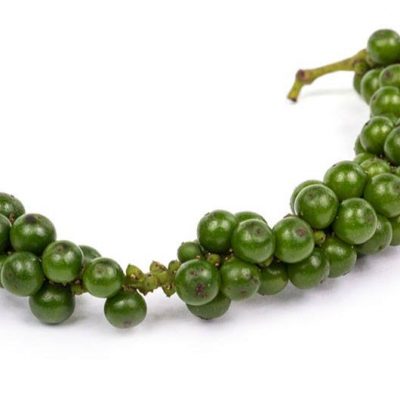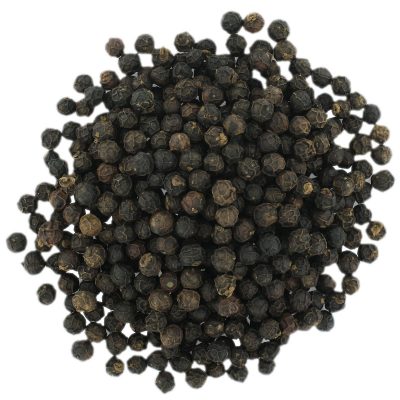The various colours of Pepper
The various types of Peppercorns: Black, White, Red and Green.
Pepper is unique in the spice universe as the pepper fruits are marketed in four different versions: They can be processed to give black, white, green and red peppercorns. By choosing time of harvest and postprocessing method carefully, all four types could, in principle, be produced from the same pepper plant.

Green Pepper
Green peppercorns are the green berry picked long before they are ripe, which can be freeze-dried to preserve the smooth texture and bright color. While the green peppercorn gives a strong tart punch of flavor to begin with, it does not linger long in the mouth. These can also be pickled for shipment. The berries for the green and black peppercorns are actually picked at about the same time but the green are not allowed to dry.

Black pepper
Black pepper is the fruits of pepper harvested unripe but not far from ripeness, and dried. In Chamkar Damnak, the berries are dipped into boiling water to provide a quick surface disinfection. Under these circumstances, fermentation takes place, and the formerly green pepper fruits turn black, similar to the fermentation of tea leaves. With the next day, the drying procedure starts, in direct sunlight.

Red pepper
This kind of pepper is a rather rare item; it is considerably more pungent and aromatic than green pepper, and it combines the spicy, mature flavour of black pepper with the fresh notes of green pepper. The natural sweetness of fresh red peppercorns is lost in the process of pickling, though.
With respect to pungency and fragrance, it is similar to good black pepper, but it also features a sugary sweet taste, which makes it unique in the pepper world. To produce it, the ripe peppercorns have to be harvested at the right time, and the drying procedure must be fast and suppress fermentation to preserve the colour.

White pepper
Fully ripened pepper fruits are used to make White pepper. For that purpose, the outer hull must be removed. The usual way of processing is soaking the berries for about one week, preferably in slow-running water. After that time, the hull disintegrates and can be separated by hand from the kernel.
The remainder, mainly the seed grain, is then dried in the sun. White pepper retains the full pungency of black pepper, but it has an altered flavour due to partial loss of aroma compounds. With regards to the extra work involved, white pepper is significantly more expensive than black pepper.
